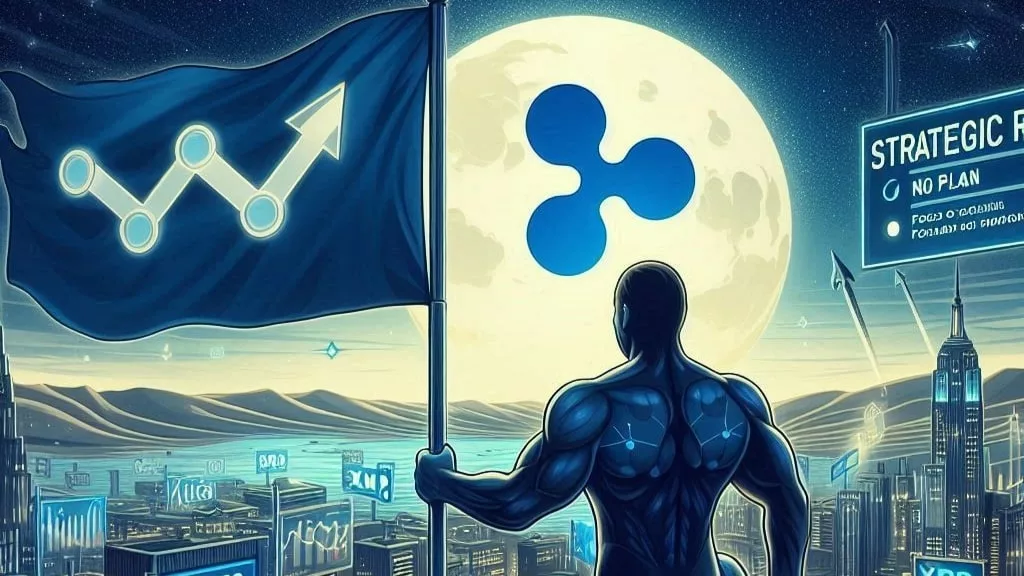
Ripple President Monica Long has made it clear: the blockchain heavyweight has no plans to go public anytime soon. Instead, Ripple is pouring its energy and capital into expanding its global footprint through strategic acquisitions and technological partnerships, leveraging its deep liquidity and robust financial standing.
This reaffirmation from Ripple comes at a time when IPO speculation surrounding the company has once again gained traction. But rather than embracing Wall Street, Ripple is charting its own course—privately and confidently.
Monica Long was candid about Ripple’s financial health during her CNBC appearance, stating that the San Francisco-based company is sitting on “billions of dollars of cash on the balance sheet.” This formidable liquidity, she explained, gives Ripple the flexibility to fuel growth without having to rely on public markets for capital.
“Right now, our priority is expansion and innovation. We’re not dependent on an IPO to achieve our goals,” Long said.
Rather than seeking validation from shareholders, Ripple appears more interested in acquiring complementary businesses and investing in infrastructure that aligns with its long-term vision for blockchain and digital asset adoption.
With no immediate IPO plans on the horizon, Ripple is signaling a broader shift in focus—one rooted in real-world utility and strategic deal-making. According to Long, the company is actively scouting for acquisition opportunities that can bolster its existing offerings, especially in the areas of financial infrastructure and blockchain-based payments.
This approach puts Ripple in contrast with many fintech peers, which often use public listings as a growth accelerant. Ripple, however, seems committed to a slower, steadier path—one that builds long-term resilience rather than chasing market hype.
Despite Ripple’s varied expansion plans, its native digital token XRP continues to play a crucial role in its broader ecosystem. Long reiterated XRP’s importance as the foundational asset of the XRP Ledger, which underpins Ripple’s suite of cross-border payment solutions.
“XRP is used for gas fees, reserve requirements, and more. As adoption of the XRP Ledger grows, so does demand for XRP,” Long noted.
XRP remains a major player in international payments, particularly in regions like Japan where regulatory clarity has allowed for streamlined access and integration.
This isn’t the first time Ripple has addressed IPO rumors—and it likely won’t be the last. Back in 2022, Ripple CEO Brad Garlinghouse hinted that an IPO could be considered once the company’s legal battle with the U.S. Securities and Exchange Commission (SEC) was resolved. However, by the end of that year, he walked back those remarks, citing the company’s solid liquidity and independent business growth as reasons for staying private.
Today, Ripple’s stance remains largely unchanged. The company insists that going public is not a priority and that it has all the resources it needs to continue its upward trajectory without shareholder pressure.
Perhaps the most insightful moment in Long’s interview came when she discussed Ripple’s mission beyond profits and token utility. She described Ripple as the “connective tissue” between the traditional financial system and the decentralized world of blockchain.
“It’s not realistic to expect banks to directly plug into the blockchain,” she explained. “That’s where Ripple comes in—we build the bridges. Whether it’s fiat-to-digital conversions, custody solutions, or stablecoin support, we’re creating the rails institutions need to operate in a tokenized world.”
Ripple’s goal, according to Long, is to become an integral part of the emerging financial architecture—one that blends the stability of traditional systems with the innovation of decentralized technology.
Ripple’s strategy stands out in a tech landscape where the IPO is often seen as the pinnacle of success. By choosing to grow privately, Ripple retains flexibility, avoids market volatility, and stays laser-focused on product development and market expansion.
With billions in reserves, a clear technological roadmap, and a leadership team committed to sustainability over spectacle, Ripple is betting big on long-term impact. Its message is clear: market validation doesn’t require a ticker symbol.
In an era dominated by IPO buzz and quarterly earnings drama, Ripple’s decision to stay private may seem unconventional. But under the guidance of Monica Long and CEO Brad Garlinghouse, the company is charting a deliberate path toward global influence—built on strong financials, product innovation, and a deep belief in the future of blockchain.
For now, Ripple is playing a different game, and if their current momentum is any indicator, they may not need Wall Street to win it.

Get the latest Crypto & Blockchain News in your inbox.